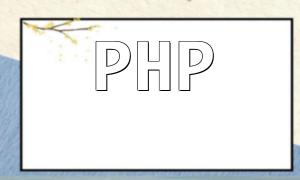Redirecting users from a list page to an article detail page is a common requirement in content management systems, especially in news, blog, or product sections. PHPCMS offers a flexible way to implement this feature effectively.
First, you'll need to create a content model in PHPCMS to store detailed article data. For example, if you're working with a news model, the main content can be stored in a field called “content.”
In the list page template, you need to add a “View Details” link for each item to allow users to navigate to the detail page. Here’s a sample snippet:
<span class="fun"><a href="{:url('article/detail', array('id'=>$article['id']))}">View Details</a></span>
This uses a template tag to dynamically generate a URL for the detail page, passing the current article’s ID so it knows which content to load.
Once the link works, you’ll need to create a controller to process the request and display the correct article content. Below is a basic example:
<?php
class Article {
public function detail() {
$article_id = intval($_GET['id']); // Get the passed article ID
if ($article_id) {
$article = get_article_detail($article_id); // Fetch article details by ID
if ($article) {
include 'article_detail_tpl.php'; // Load the detail page template
} else {
echo 'Article not found!';
}
} else {
echo 'Invalid parameter!';
}
}
}This code checks for a valid ID, retrieves the article details, and includes the detail template to display the content.
The article_detail_tpl.php template is used to present the article’s content. You can display the article title, content, publish time, and other relevant data using standard PHP syntax within the template.
Following the steps above, you can implement a clean redirect from a list page to an article detail page in PHPCMS. In real-world development, be sure to validate all user inputs to prevent malicious activity such as SQL injection.
You can also expand on this basic setup with features like related articles, comment sections, or view counters to improve the user experience.
PHPCMS provides a flexible templating and controller system that makes it easy for developers to build detail page functionality. The method outlined in this article is suitable for most content-focused websites built with PHPCMS and offers a strong foundation for optimizing both structure and user experience.









